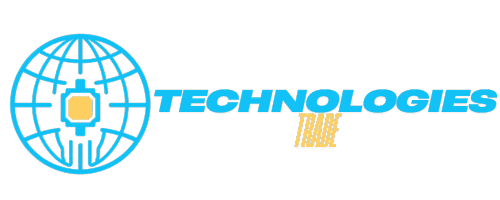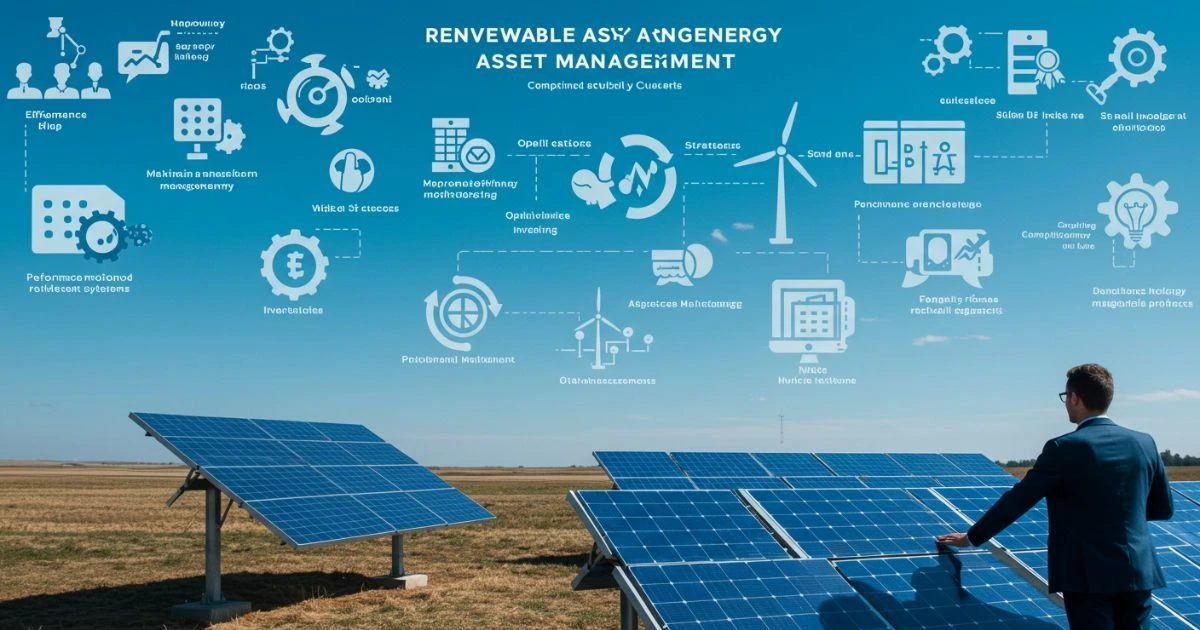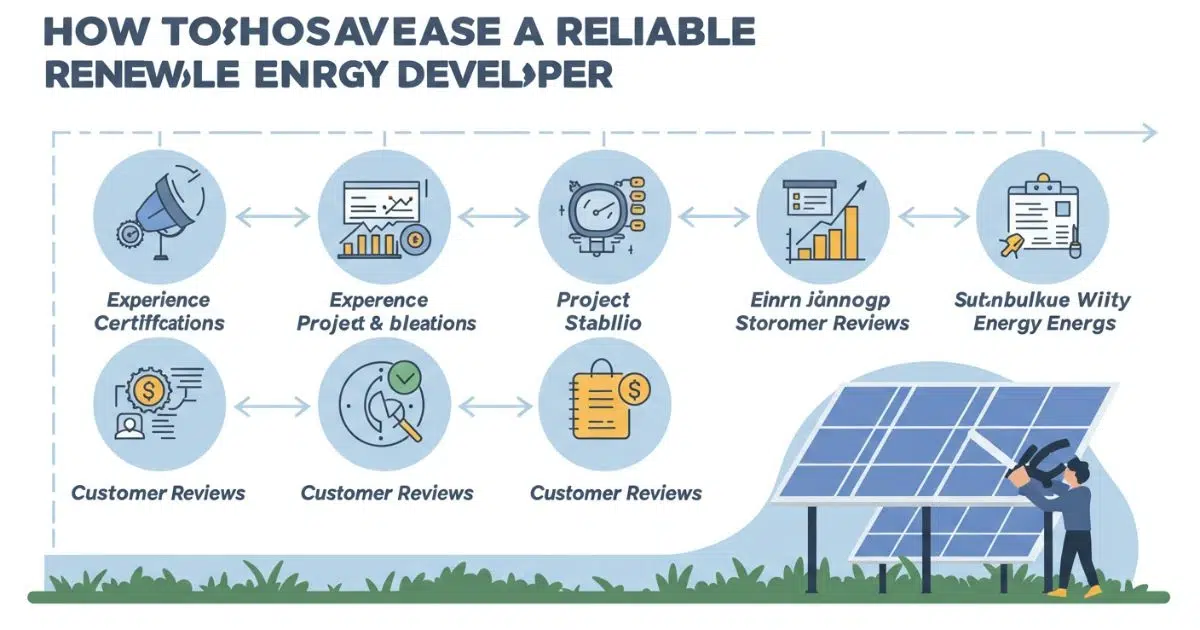Guide to Renewable Energy Asset Management
Managing renewable energy assets is all about finding the right balance. It’s about being efficient, sustainable, and profitable. This guide helps professionals make the most out of solar, wind, and other green energy investments.
It’s about getting the most output while keeping costs low. This ensures projects meet environmental goals. Whether you manage solar farms, wind turbines, or hybrid systems, this guide offers tools to improve performance and meet U.S. energy standards.
Important decisions include choosing the right monitoring systems and negotiating power purchase agreements. Getting federal tax credits is also crucial. Companies like NextEra Energy and Tesla Energy use data to track asset health and predict when maintenance is needed.
By following best practices in financial planning and technology, you can increase the life and return on investment of your projects.
Key Takeaways
- Renewable energy asset management combines technical oversight, financial planning, and regulatory compliance.
- Effective strategies include real-time performance monitoring and predictive maintenance schedules.
- U.S. incentives like the Investment Tax Credit (ITC) directly impact project profitability.
- Leading companies prioritize workforce training to maintain high operational standards.
- Long-term success depends on aligning asset strategies with evolving energy market demands.
Understanding the Fundamentals of Renewable Energy Asset Management

Learning the basics of renewable energy asset management is key. It makes sure your projects are good for the planet and profitable. This part explains how renewable energy developers make these projects work.
What Defines Effective Asset Management in Renewable Energy
Good strategies have three main parts:
- Performance tracking: Keeping an eye on how much energy is made, how well it works, and how it fits into the grid
- Cost control: Finding the right balance between spending money upfront and making money over time
- Regulatory agility: Being able to change with new laws and goals for going green
Key Components of a Renewable Energy Portfolio
A strong portfolio has:
- Solar panels that work best in the local sun
- Wind farms with the latest turbine tech
- New ideas like floating wind farms and green hydrogen projects
The Evolution of Asset Management Practices in Sustainable Energy
At first, it was just about keeping things running. Now, we use AI to guess when things will break and how to get more energy. Companies like NextEra Energy use machine learning to cut downtime by 30%+. This shows how renewable energy asset management can give you an edge.
Essential Tools and Technologies for Optimizing Your Renewable Assets
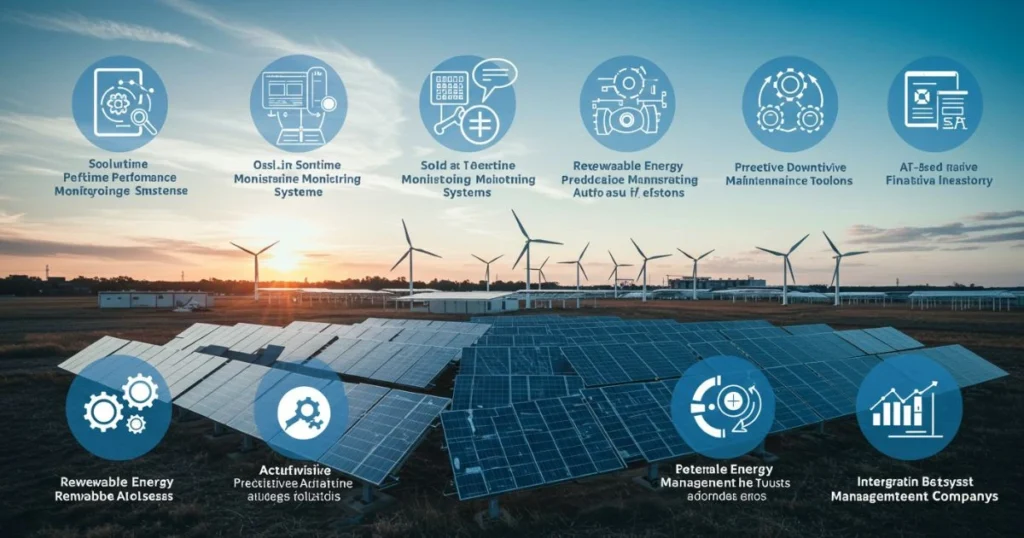
Today’s renewable energy asset management companies use top-notch tools to boost efficiency and profits. They have remote monitoring systems that connect to SCADA. This lets you see how solar panels, wind turbines, and storage systems are doing in real-time. It’s like knowing right away if a wind farm’s output drops, so you can act fast.
- AI-Powered Predictive Analytics: Companies like renewable energy asset management companies use AI to predict when maintenance is needed. This cuts downtime by 30% or more.
- Drone Inspections: Firms like Pattern Energy use drones for detailed site checks. This cuts costs by 50% compared to manual inspections.
- Data Analytics Platforms: Tools from Enel Green Power’s Asset Management suite analyze weather and grid demand. They help optimize energy dispatch strategies.
“Predictive maintenance software can extend turbine lifespan by 15 years,” states a 2023 report by Wood Mackenzie, a leader in energy market analysis.
Choosing the right tech depends on your portfolio size. Small solar arrays might use cloud-based dashboards from Locus Energy. But, bigger projects need GE Digital’s Predix SCADA platforms. Ask renewable energy asset management companies how their tools grow with you. Look for solutions that fit with your systems and offer 24/7 support for smooth operations.
Financial Strategies for Maximizing Renewable Energy ROI
Managing finances is crucial for making renewable energy projects profitable. Start by matching your budget to the full life of your assets. This includes from installation to maintenance. Use tools like predictive analytics to forecast costs and avoid overspending.
Also, explore tax and incentive options to find hidden savings. Learn how top renewable energy companies in Texas manage risks with creative financial plans.
Budgeting and Cost Control for Long-term Asset Viability
Good budgeting means being clear about costs. Track all expenses, from inverter replacements to grid fees. Use flexible budget plans to adjust with changing energy prices.
Renewable energy companies in Texas often group projects to get discounts. This can cut costs by up to 15%, as 2023 reports show.
Incentives and Tax Benefits Available to Renewable Energy Asset Owners
- Investment Tax Credit (ITC): Claim 30% of project costs for solar and wind installations
- Texas Property Tax Exemptions: Up to 10 years for qualified renewable facilities
- Production Tax Credit (PTC): $24/MWh for energy generated in first 10 years
Risk Management and Insurance Considerations
Weather changes require special insurance. Look for policies that cover damage from storms or wildfires. Many renewable energy companies in Texas mix traditional insurance with futures contracts to manage output risks.
Strategies from Top Renewable Energy Companies in Texas
Big names like NextEra Energy Resources and Enel Green Power focus on long-term deals with utilities. These agreements secure income while using tax equity partnerships for funding. Enel’s 2022 report shows how combining federal and state incentives cut financing costs by 18%.
Study how these leaders use data to adjust plans during market changes. This ensures steady profits even when energy prices fluctuate.
Operational Excellence in Renewable Energy Asset Management
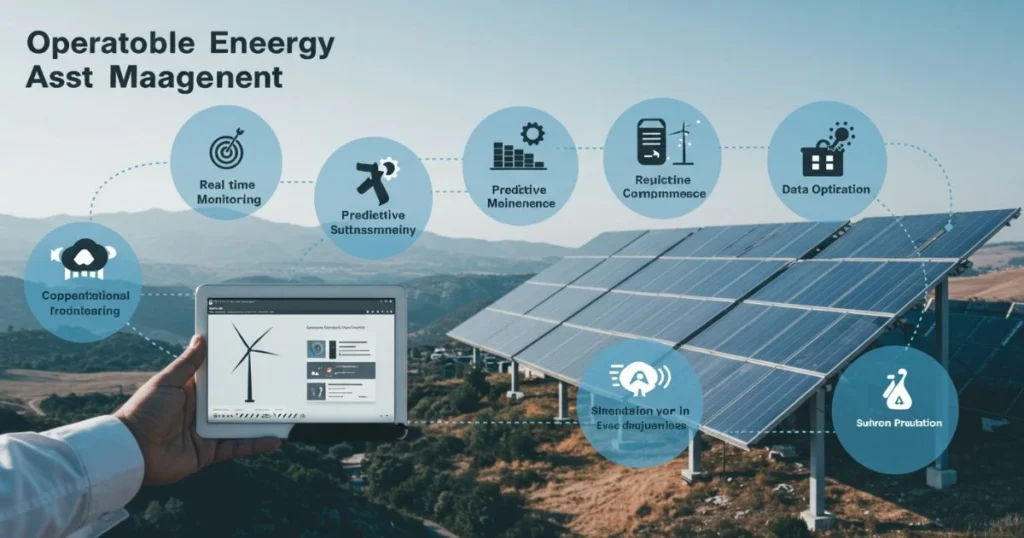
Operational excellence makes sure your renewable energy assets work well. This means they produce more and make more money. We’ll look at how to create systems that match daily work with long-term goals. You’ll learn about tracking performance, keeping equipment in good shape, and managing teams well.
Performance Monitoring and Reporting Best Practices
Keep an eye on things like energy output, downtime, and maintenance costs. Use software to make data into useful reports. Look at KPIs to find ways to get better. For example, solar farms track panel efficiency to plan for replacements.
Maintenance Scheduling and Optimization
- Preventive: Regular checks and part swaps
- Predictive: Sensors and AI to predict failures
- Corrective: Quick fixes when problems happen
Find the right mix to save money and make assets last longer. Wind turbines, for instance, can see up to 30% less downtime with predictive maintenance, studies show.
Workforce Management for Renewable Energy Sites
Build a team with the right skills in solar, wind, or battery tech. Keep training and safety practices up. Use rewards for meeting goals. St Louis Renewable Energy-Scotts Contracting uses bonuses for uptime and new ideas.
Case Study: St Louis Renewable Energy-Scotts Contracting Approach
“Our cross-trained technicians handle both solar and battery systems, cutting response times by 40%.” – St Louis Renewable Energy-Scotts Contracting Operational Report
St Louis Renewable Energy-Scotts Contracting uses real-time data and team training. Their methods include:
- Custom maintenance checklists for each site
- Incentives for early issue reports
- Quarterly skill checks to keep the team ready
These steps increased their Missouri solar farm output by 15% last year. They also cut labor costs by 10%.
How to Select Renewable Energy Asset Management Companies for Your Portfolio
Choosing the right renewable energy asset management companies is crucial. You need to match your goals with their skills. First, check what your portfolio needs, like project size, technology, and location.
Key criteria to evaluate:
- Track record: Look for firms with success in your asset type, like solar or wind.
- Technical expertise: Make sure they have the right certifications and staff for renewable energy.
- Geographic focus: Choose companies that work in your asset’s location, like Texas wind farms or California solar plants.
Ask these critical questions during due diligence:
- What’s your average annual uptime for similar projects?
- How do you handle unexpected equipment failures?
- Can you share references from long-term clients?
“Transparency in reporting and real-time data access are non-negotiable for modern renewable energy asset management,” says the 2023 NREL industry benchmark report.
Make sure contracts have clear SLAs, like energy targets or quick maintenance. Talk about penalties for not meeting goals and bonuses for going above. Compare big companies like NextEra or Pattern Energy with those focusing on specific areas like offshore wind or storage.
Have regular reviews to check ROI and how fast they adopt new ideas. Choose a partner who can quickly adjust to changes in tax credits or rules. This keeps your portfolio growing with their ability to adapt.
Career Paths and Opportunities as a Renewable Energy Developer
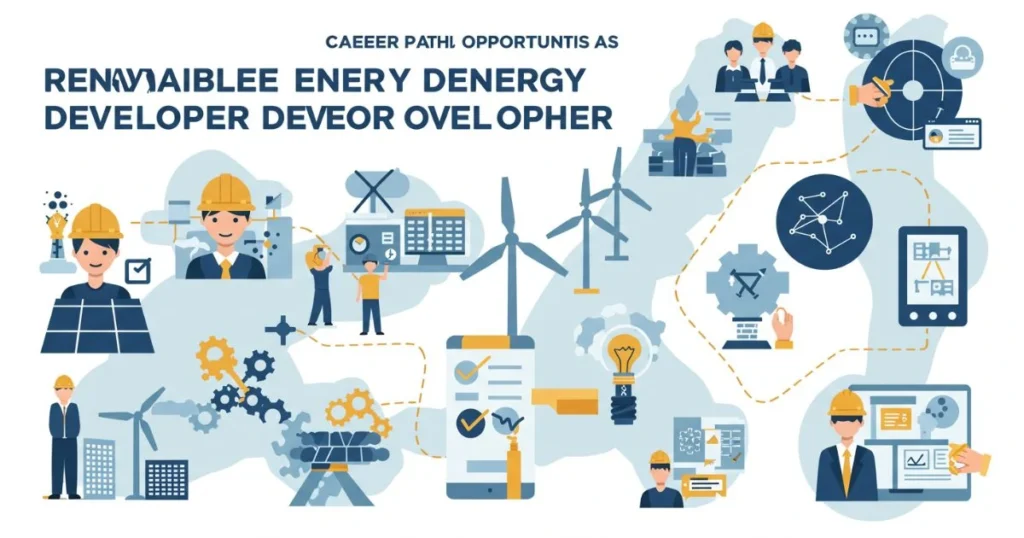
The renewable energy sector is booming, creating a high demand for skilled developers. As a renewable energy developer, you’ll play a key role in bringing clean energy projects to life. Here’s how to make a mark in this exciting field.
Essential Skills for Success in Renewable Energy Development
Employers look for a mix of technical, financial, and soft skills. Key skills include:
- Technical expertise: Skills in solar panel design, wind turbine engineering, or grid integration systems
- Financial analysis: Skills in budget forecasting, investment modeling, and ROI calculations
- Regulatory knowledge
- Collaboration skills: Ability to work well in teams and communicate with stakeholders
Education and Certifications That Accelerate Your Career
Many developers start with degrees in mechanical engineering, environmental science, or business administration. Getting certifications like the Project Management Professional (PMP) or the Clean Energy Manager Certification (CEMC) shows your expertise. Specialized courses from places like the National Renewable Energy Laboratory (NREL) or online platforms like Coursera’s solar energy programs also catch employers’ attention.
Building Networks in Renewable Energy
“Joining the Solar Energy Industries Association (SEIA) or attending Windpower conferences opens doors to mentors and job leads.”
Get involved with groups like the American Wind Energy Association (AWEA) or the American Council on Renewable Energy (ACORE). Follow industry leaders on LinkedIn and join webinars by the International Renewable Energy Agency (IRENA). These connections can lead to real career opportunities.
Switching from oil and gas? Emphasize your project management skills and take courses to specialize in renewable energy. This will help you fit into developer roles.
Conclusion: Building a Sustainable Future Through Effective Asset Management
Effective renewable energy asset management is key to both financial success and environmental sustainability. Using advanced tools like predictive analytics and IoT sensors can improve performance and cut costs. The strategies mentioned help turn your renewable portfolio into a strong, profitable business.
New trends like energy storage and grid modernization are changing the industry. Companies like NextEra Energy and Tesla in Texas are leading the way. They show how new ideas can increase output and make grids more stable.
Start by checking your current systems and team up with renewable energy experts. Look for partnerships in Texas, where top companies are testing new solutions. Focus on training your team and updating your technology to stay ahead. Every step you take today helps the energy transition and secures your future. Start using these smart strategies now for a cleaner energy future.
FAQ
What is renewable energy asset management?
Renewable energy asset management is about managing and improving renewable energy assets. It aims to get the most out of these assets financially and technically. This includes solar, wind, and hydroelectric power.
How do I choose the right renewable energy asset management companies?
Look at a company’s past work, technical skills, and where they operate. Check their services, how they measure success, and if they match your goals. Read reviews and testimonials to see if they fit your needs.
What financial strategies can improve my renewable energy ROI?
To boost your renewable energy ROI, use smart budgeting, tax credits, and manage risks well. These steps can make your project more profitable and sustainable over time.
What role do renewable energy developers play in asset management?
Renewable energy developers plan, build, and run renewable projects. They handle key management tasks like meeting performance goals, following rules, and making money. Their knowledge is key to making your investments work well.
How can technology improve the management of renewable energy assets?
New tech like advanced management systems, predictive analytics, and monitoring can help manage assets better. These tools can spot problems early, improve operations, and lead to better financial results.
What are the key components of a renewable energy portfolio?
A good renewable energy portfolio has a mix of technologies like solar, wind, and hydro. It focuses on measuring performance, managing risks, and following rules. Diversifying helps reduce risks and increase potential gains.
There are no reviews yet. Be the first one to write one.
